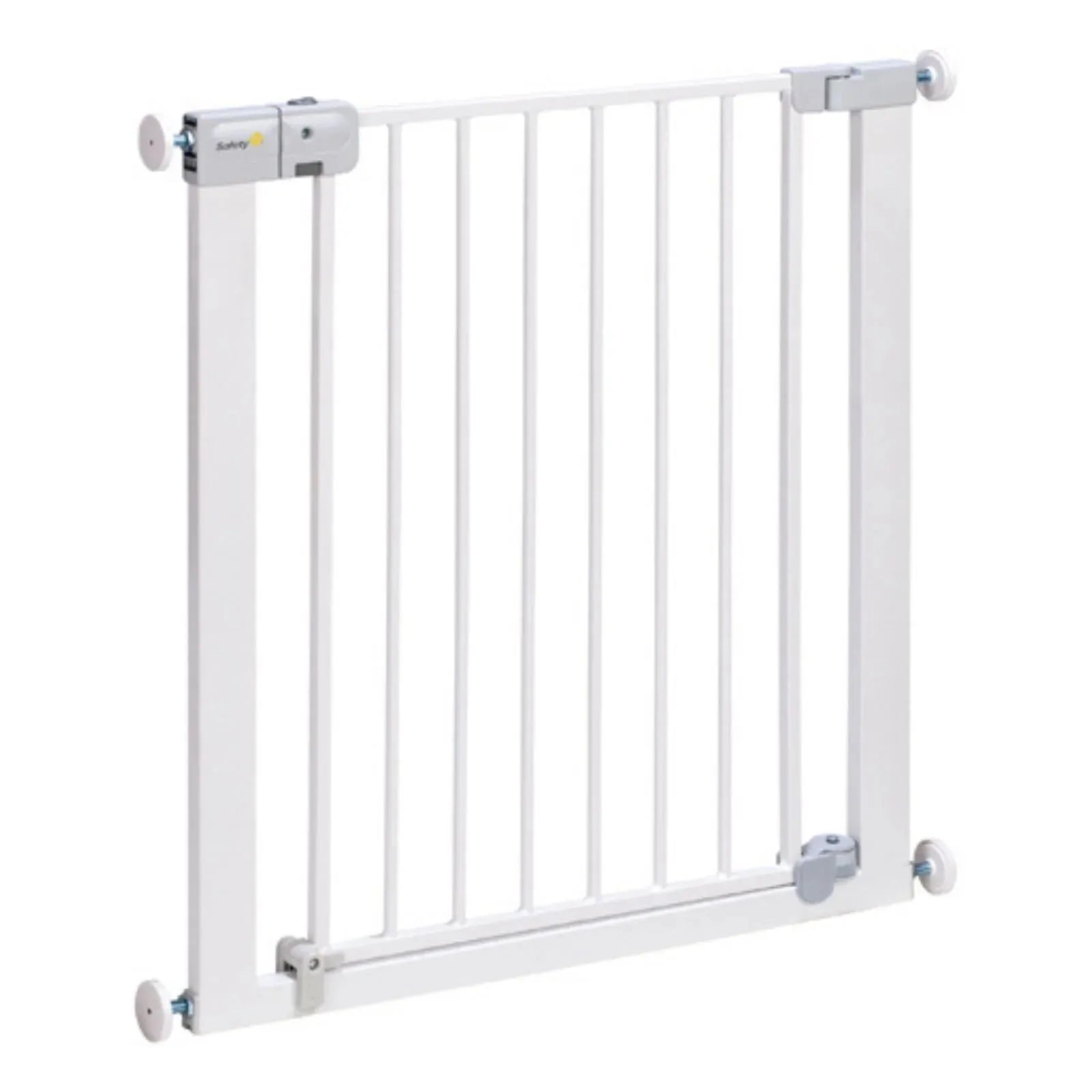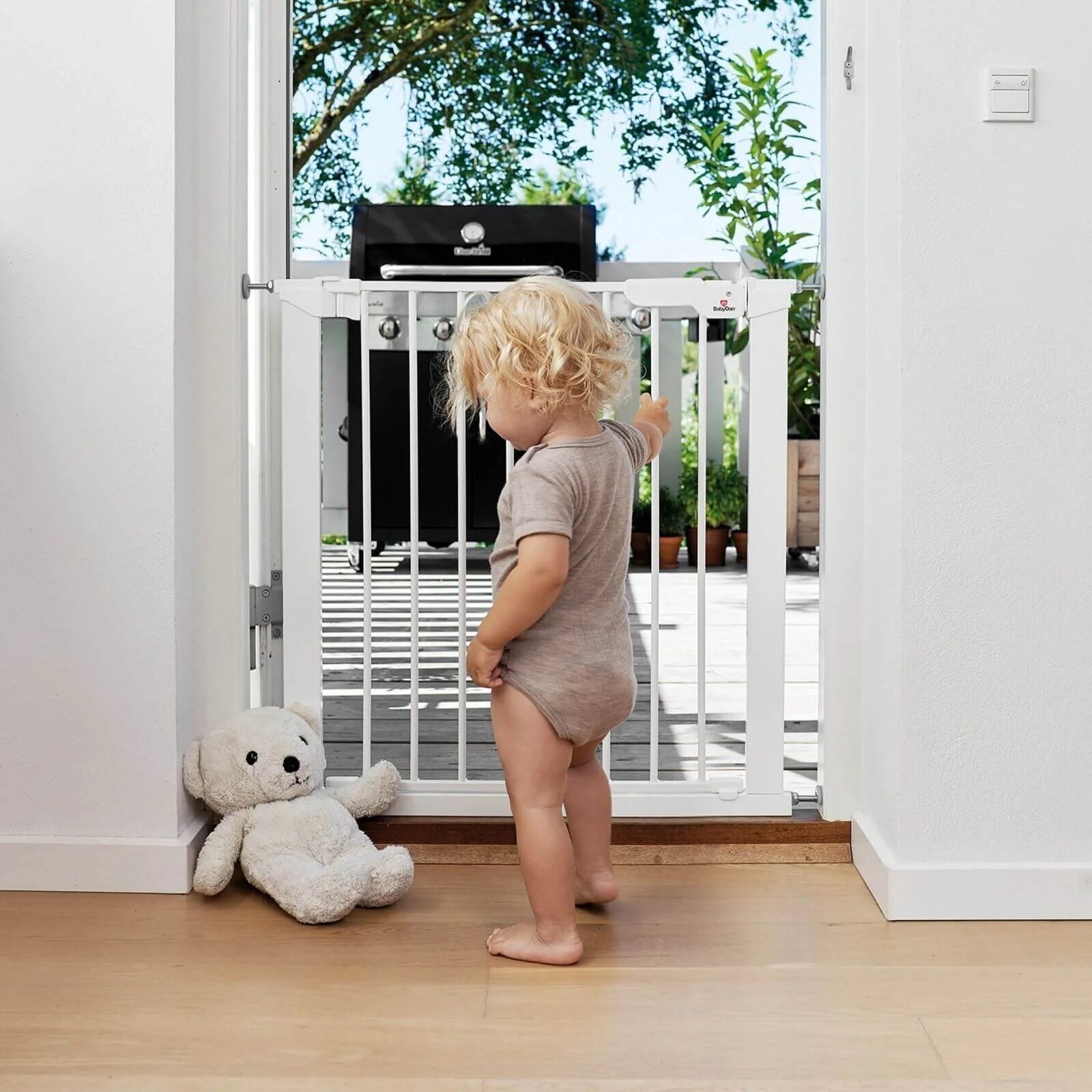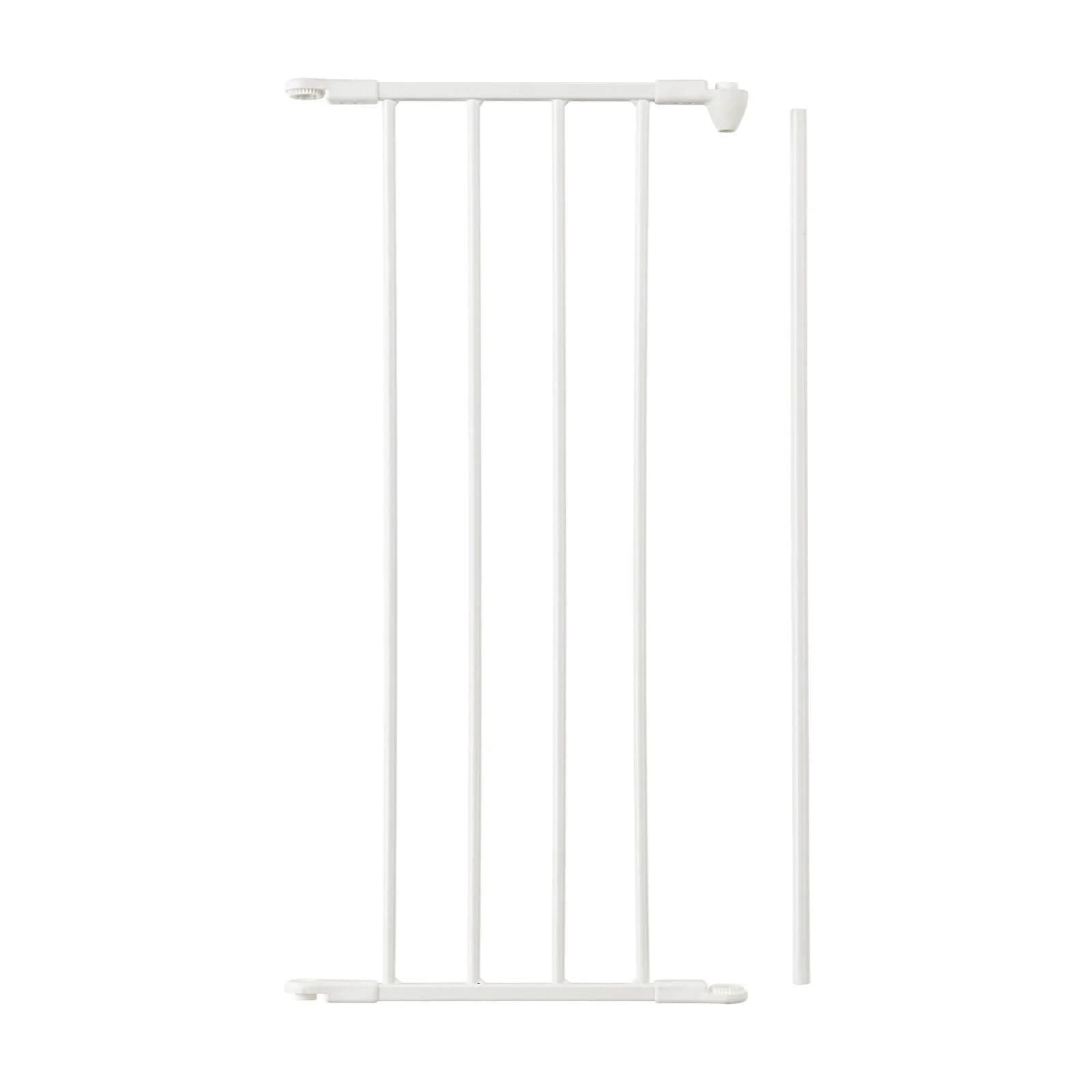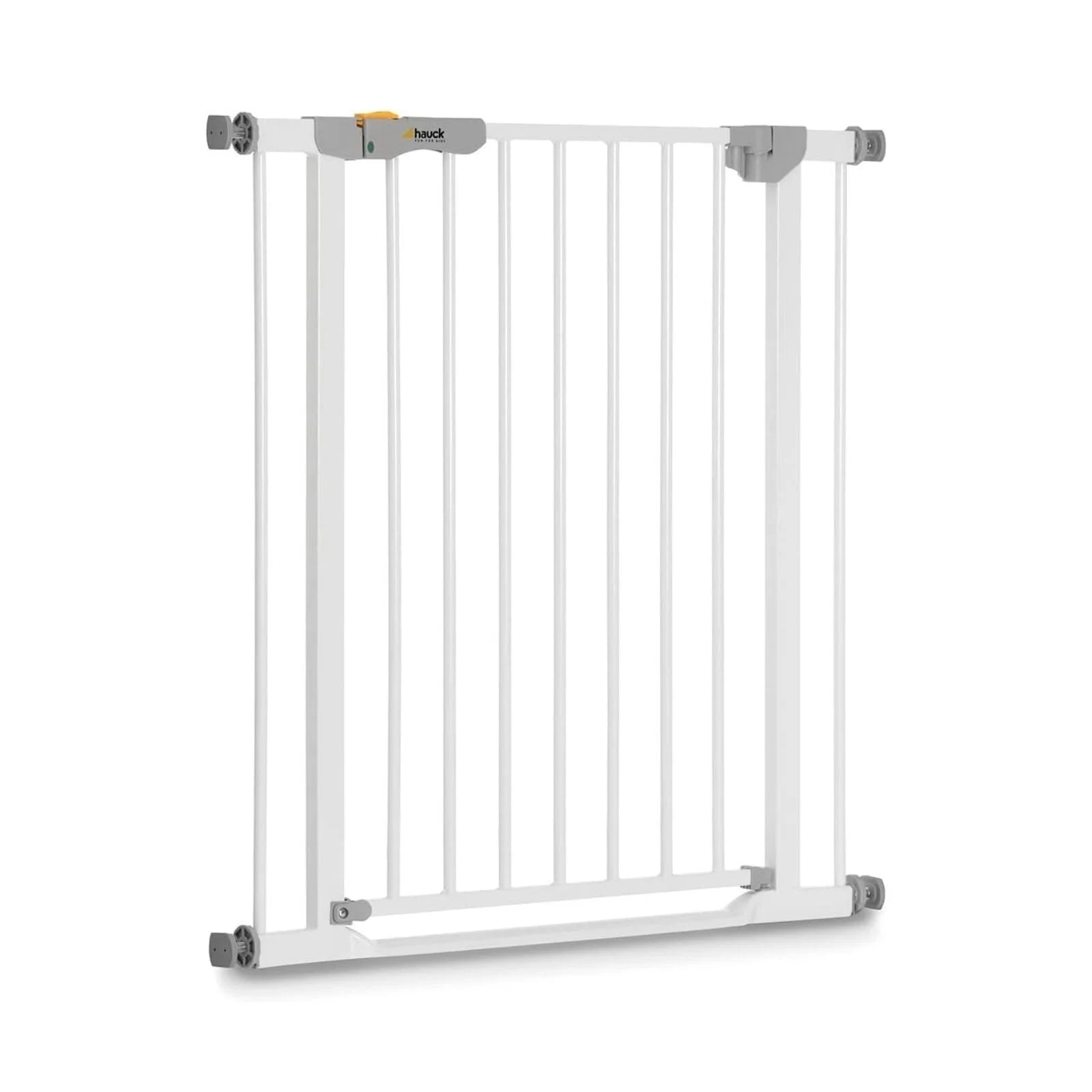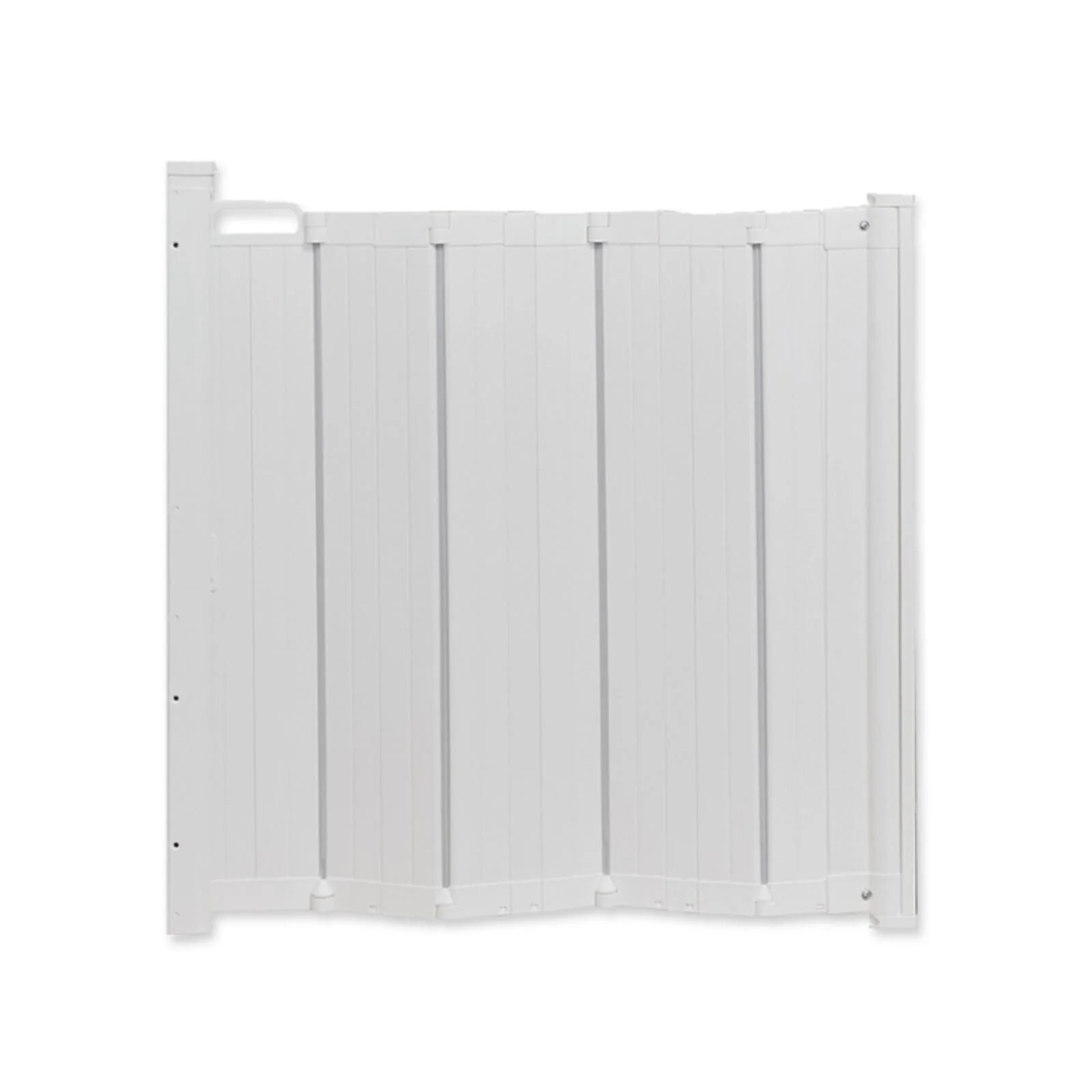Door & Stair Gates
Baby gates and stair gates are important safety measures that keep young children from entering parts of the home that might be dangerous. They aid with the safety of newborns and toddlers by erecting barriers and limiting their movement to certain locations.To ensure maximum safety, always follow the manufacturer's recommendations while installing and using baby gates. Inspect the gate on a regular basis for evidence of damage or wear and tear.
Safety with Baby Door & Stair Gates
Baby door gates are used to block off doors and restrict small children from reaching particular sections of the house. They act as a barrier to keep newborns and toddlers safe.
Baby stair gates: Stair gates are particularly intended to keep youngsters from accessing potentially dangerous staircases. A baby safety gate is a broad word that incorporates both door gates and stair gates. It refers to any gate intended to keep infants and toddlers away from potential hazards or restricted places in the house.
Then toddler safety gates function similarly to baby gates.
Door stops are devices that prevent doors from slamming shut. They can be useful in reducing accidental finger and hand injuries, especially in young children who may be ignorant of the hazard.
Metal Safety Gate: Metal safety gates are constructed of metals such as steel or aluminum. They are noted for their strength and durability, and they provide a strong barrier for childproofing.
Safety guards are various devices or products meant to improve kid safety in various parts of the house.
What Should You Consider When Buying Door & Stair Gates?
Gate Type: Pressure-mounted gates and hardware-mounted gates are two types of gates available. Pressure-mounted gates are simple to install and appropriate for situations where there is little risk of falling, such as doors and corridors. Hardware-mounted gates, on the other hand, are fixed into the wall and create a more secure barrier, making them appropriate for stairwells.
Size and Adjustability: To guarantee a correct fit, measure the width of the area where you wish to put the gate. Some gates are moveable, allowing for different widths. Consider the gate's height as well to avoid climbing.
Safety Standards: Look for gates that have been certified by ASTM International or the JPMA (Juvenile Products Manufacturers Association).
Gate Design: Select a gate design that meets your requirements and preferences. Some gates open and close like doors, while others slide or retract.
Some gates include extra features such as automated closing mechanisms, double-locking systems, or indication lights to indicate that the gate is safely shut.
Longevity and construction: To ensure longevity and dependability, look for gates built of strong materials such as metal or wood.
How to use baby Door & Stair Gates?
The stages for using baby doors and stair gates are as follows:
Select the Correct Gate: Choose a gate that is appropriate for the place where it will be installed. select a gate especially intended for doors, and select a gate specifically made for staircases.
Read the following instructions: Read the manufacturer's instructions that come with the gate carefully. Each gate may have its own set of installation and usage instructions that you should follow.
Determine the Installation Location: Determine where you want the gate to be installed. Stair gates should be installed at either the top or bottom of the staircase. Place door gates in the doorway or hallway to restrict access to specific places.
After installation, test the gate to ensure it is secure and securely latched. To test the gate's stability, apply light pressure from both sides.
Lock and Unlock: Learn how to use the gate's locking mechanism. Some gates include a latch or lock that needs lifting, sliding, or pressing buttons at the same time to open. To ensure that you can easily operate the gate, practice opening and shutting it.


